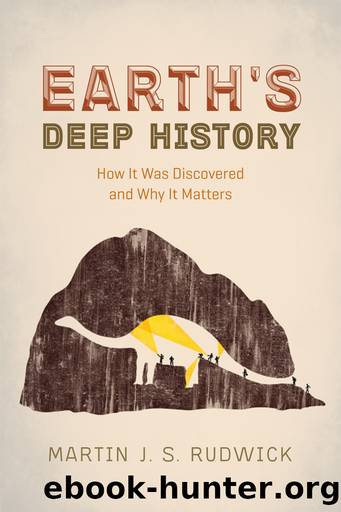Earth’s Deep History: How It Was Discovered and Why It Matters by Martin J. S. Rudwick

Author:Martin J. S. Rudwick [Rudwick, Martin J. S.]
Language: eng
Format: epub
Publisher: The University of Chicago Press
Published: 2014-07-14T16:00:00+00:00
MEN AMONG THE MAMMOTHS
A Pleistocene Ice Age posed new questions for other puzzles about the relatively recent history of the Earth. How were these major climatic changes related to the apparent mass extinction of the mammoths and other large mammals that Cuvier had first reconstructed? Had they been killed off by the glacial conditions? Or had they been well adapted to the cold, as the mammoth’s wooly coat suggested? And how was the Ice Age related to the origin and early history of human beings? Had the first humans been the contemporaries of the mammoths, or had they made their first appearance only after the Ice Age finally ended and the mammoths were gone? In the longer perspective of the Earth’s total history, did the Ice Age or Pleistocene mark the boundary between the human world and the pre-human? If it did, it was from a human point of view surely the most decisive point in that entire story, and the most important period to understand.
Here a brief flashback to the earlier part of the century is needed, to give context to some sensational later developments. Claims for the contemporaneity of men and mammoths had been met with deep scepticism, notably and most influentially by Cuvier, who had good reason to doubt the authenticity of all the alleged finds of human fossils initially known to him. He remained sceptical, even when human bones and those of the extinct mammals were found close together, because there was often good evidence (as in the case of Buckland’s “Red Lady” in Paviland cave) that they were not of the same age. He was convinced that the mass extinction of the large mammals had been caused not by any human activity but by a natural catastrophe of some kind; and this implied that it must have happened before human beings first came on the scene, or at least before they became a significant factor in the physical world. But in his later years Cuvier’s justifiable scepticism hardened into unjustified dogmatism, in the face of increasingly reliable reports of genuine human fossils. For example, in several caves in the south of France the young naturalists Jules de Christol and Paul Tournal found a few human bones mixed with abundant animal bones preserved identically in the same deposits. Their reports polarized scientific opinion, and not only in France.
The best such case, however, was not reported until shortly after Cuvier’s death in 1832. The physician Philippe-Charles Schmerling described caves in the Meuse valley near his home in Liège (in the then newly independent Belgium), and reported finding two human skulls—one of them lying close to a mammoth tooth—together with chipped flints and artifacts of bone. These were mixed with the bones of assorted extinct mammals, all buried in deposits deep beneath the floors of the caves and all preserved in just the same way. Schmerling was well aware of the doubts expressed by Cuvier and others about the earlier discoveries, and emphasized that he himself had excavated
Download
This site does not store any files on its server. We only index and link to content provided by other sites. Please contact the content providers to delete copyright contents if any and email us, we'll remove relevant links or contents immediately.
Man-made Catastrophes and Risk Information Concealment by Dmitry Chernov & Didier Sornette(5956)
The Revenge of Geography: What the Map Tells Us About Coming Conflicts and the Battle Against Fate by Kaplan Robert D(4052)
Zero Waste Home by Bea Johnson(3805)
COSMOS by Carl Sagan(3589)
Good by S. Walden(3521)
In a Sunburned Country by Bill Bryson(3508)
The Fate of Rome: Climate, Disease, and the End of an Empire (The Princeton History of the Ancient World) by Kyle Harper(3033)
A Wilder Time by William E. Glassley(2835)
Camino Island by John Grisham(2778)
Organic Mushroom Farming and Mycoremediation by Tradd Cotter(2661)
The Ogre by Doug Scott(2657)
Human Dynamics Research in Smart and Connected Communities by Shih-Lung Shaw & Daniel Sui(2479)
Energy Myths and Realities by Vaclav Smil(2463)
The Traveler's Gift by Andy Andrews(2436)
9781803241661-PYTHON FOR ARCGIS PRO by Unknown(2343)
Inside the Middle East by Avi Melamed(2328)
Birds of New Guinea by Pratt Thane K.; Beehler Bruce M.; Anderton John C(2236)
A History of Warfare by John Keegan(2214)
And the Band Played On by Randy Shilts(2166)
